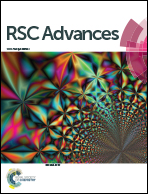Preparation of Rh/C and its high electro-catalytic activity for ethanol oxidation in alkaline media
Abstract
The ethanol electrooxidation behaviors on Rh/C in alkaline media were studied compared with that on Pd/C. The Rh/C and Pd/C catalysts were synthesized by a microwave heating-glycol reduction method and characterized by X-ray diffraction (XRD) and transmission electron microscopy (TEM). The electrocatalytic activities of the catalysts were investigated by cyclic voltammetry (CV), chronoamperometry (CA), electrochemical impedance spectroscopy (EIS) and single cell discharge testing methods. The results showed that Rh/C presented higher activity and better stability toward ethanol oxidation than Pd/C. On the CV plots, it was observed that the onset potential of oxidation on Rh/C shifted negatively and the backward peak current on Rh/C decreased as compared to that of Pd/C. Intermediate species are produced during the oxidation process, as revealed by the complex impedance spectra. Rh/C presented higher tolerance for surface poisoning than Pd/C, which can be reflected by the negative impedance on the Pd/C electrode. The selectivity for ethanol oxidation to CO2 (existing as CO32− in alkaline media) on Rh/C and Pd/C electrodes were determined to be as low as 10.07% and 2.18%, respectively. Nevertheless, the ability of Rh for breaking the C–C bond in ethanol is still slightly higher than that of Pd under the same conditions.


 Please wait while we load your content...
Please wait while we load your content...